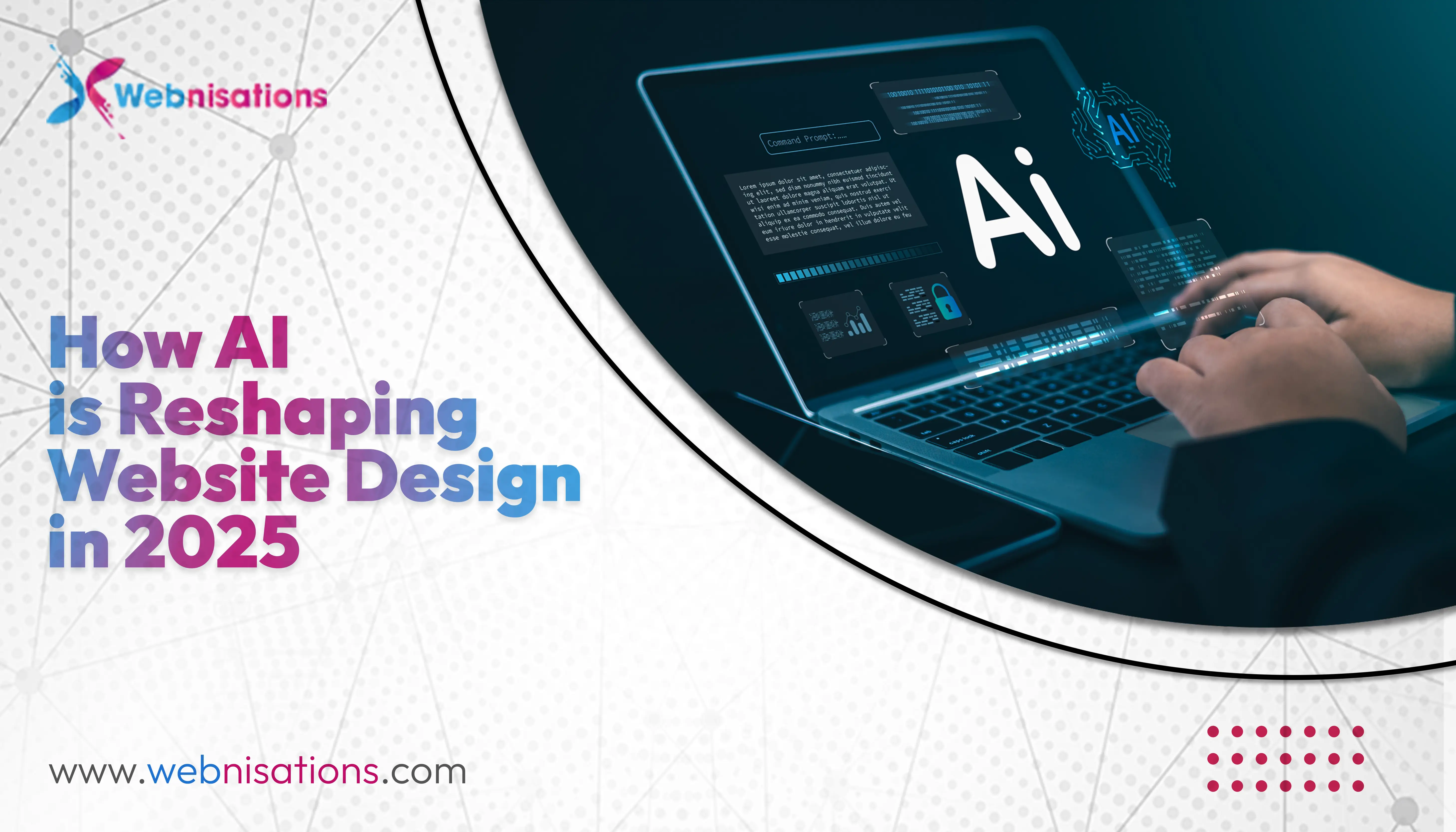-
Services
- Custom Web Design & Development Get your ideas developed into your own style with a customized website.
- WordPress Development A unique optimized WordPress website customized to your requirements.
- E-commerce Web Development Get your business online with a fully customized e-commerce website for your brand.
- Web Applications & Portals Get your own unique web applications and portals for your brand.
- SEO Improve the quality of the reach on your web pages with detailed search engine optimization of your brand.
- Domains and Hosting Mobile Application Development Logo Design Branding Video Animation Content Writing Website Management Digital Marketing
- Packages
- Client Reviews
- Portfolio
- Blog
- Contact Us
- Select your business
How AI is Reshaping Website Design in 2025

Introduction
The online world is changing at a record rate, and artificial intelligence (AI) is the driving force behind the change. By 2025, AI web design will have become a defining principle of how companies think about, design, and optimize their websites. From streamlining design processes to providing tailored user experiences, AI isn't just rewriting the way sites are developed; it's rewriting the definition of great web design.
The Strength of Design Automation
Design automation is now one of the most significant developments in contemporary web design. With AI-powered tools, these tools can examine brand guidelines, audience information, and performance indicators and automatically produce layouts, choose typography, and refine visual elements.
This transition removes much of the repetitive work traditionally associated with AI web design, enabling the designers to concentrate on strategy, storytelling, and innovation. Whether it's selecting a responsive design or validating color harmony across digital properties, AI provides precision and consistency at scale.
For companies, design automation translates into quicker turnaround times, lower costs, and performance-optimized and visually refined websites. It is also making design more democratic startups and small businesses can now be able to get the quality of the websites of professionals, without the need to have the technical knowledge.
Enhancing User Experience through Personalization
With AI, dull websites are being turned into smart, dynamic websites that react to behavior as people use them. Personalization has come a long way beyond showing a user's name or place. In 2025, AI follows the patterns of engagement, preferences, and intentions to browse so that people can get curated content experiences.
A customer landing on a service website, say, may be shown dynamic promotions, case studies, or opinions specific to their past interactions. In online shopping, AI can cross-analyze purchase history to suggest products that are most relevant to individual customers' personal interests.
This degree of individualization helps to increase the level of engagement and trust and boosts the conversion rates. More significantly, it creates a connection, turning the site from a static interface to a dynamic digital experience that is personal and intuitive.
Smart SEO and Content Optimization
AI is also transforming the way websites are optimized for search and performance. Along with the use of manual audits, AI tools conduct ongoing analysis of data on the site and detect new opportunities to make certain improvements. From optimizing content readability and metadata to reducing site speed, AI makes all parts of a site refined to the highest visibility level.
AI-powered systems also utilize predictive analytics to learn and develop keyword trends and the intent of users. This enables companies to remain ahead of SEO changes and develop content strategies that connect with live search behaviors.
The outcome is a website that not only ranks but also offers significant content that engages the audience and satisfies their changing expectations.
Voice, Visual, and Predictive Design
With voice search and visual recognition going mainstream, AI web design is now more than just standard interaction models. Sites are now more and more incorporating voice-based navigation and image-based searching to make them more accessible and user-friendly.
Meanwhile, AI-powered predictive design forges the next level of data-driven optimization. Using user interaction data, AI can make continuous design adjustments, refining layouts, adjusting color schemes, or repositioning CTAs to improve engagement and conversion outcomes.
Conclusion
AI has changed the very nature of things it used to engage in the background, and now it is leading digital transformation. The integration of AI web design and design automation is giving brands the power to create websites that are no longer just visually appealing but also smart, data-driven, and focused on results.
At Webinisations, we've not only been the ones that witness the change, but we also have been the change. The digital experience we create, combined with the promotion of human creativity and the precision of AI technology, not only attracts the audience but also converts it intentionally. The future of web design is no longer a distant dream. It is already happening. And with Webinisations, your brand can take the lead in that.



